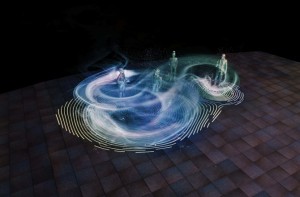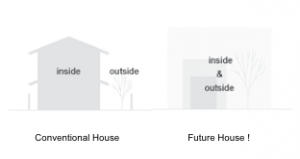Case study: House N-Sou Fujimoto Architects
Reading: The Shape of Energy – Sean Llaly
What is Energy? Could you really say it has a visual form? Or is it perceived by our senses? Many ideas rush through our head when it comes to the shape, construction or space of energy . “In physics, energy is a property of objects, transferable among them via fundamental interaction, which can be converted in form but not created or destroyed.” Humans have a multitude of senses; Sight, hearing, taste, smell, and touch are the five traditionally recognized, using these will are able to approach to the shape of energy. But what’s our roll in architecture? Sean Llaly explains how we as architects have used for thousands of years physical material boundaries; such as stone, steel, or glass, but are they able to transform this type of work? How can we use the shape of energy as an architectural material to build with?
“They become a set of building materials known as material energies that give the architect access to the new type of boundary edges that move from points, lines, and surfaces to gradients of intensities and fallouts” with these phrase we can approach to the future of architecture. Imagine living in an era where you can switch on ad off boundaries that divide or form spaces, are we willing to transform our way of living to make this type of fantasy come to life? It a question we as architects are users of space have to answer.
“The shape of architecture is determined by the extent to which the physical boundaries of a defined territory are held at any particular moment.”In this point the importance of the boundaries became crucial; do we increment our starting energy point so that our boundary remains intact or grows and our external elements don’t overcome the shape in with energy shows itself. We can be able to transform in a grater life span and a diverse for of living and controlling our own space. “ Shape succession creates an architecture that is more agile and has innate ability to be upgraded.
The House N in certain way it’s a new way of conceiving space. Could it be possible to fell on the street but you are really in you own house and backyard, people walking can just walk in and have certain access to you first layer or boundary house? Its something amazing for our world and the way our cities work. Basically we have to come to a point as architects to be able to project interaction in space. For my future subject i would like to investigate more about parametricism and the evolution of time in our “future architecture” are we going to change all of our way life? “an architectural environments poses an inbuilt kinetic capacity that allows those environments to reconfigure and adapt in response to prevalent occupational patterns”.


